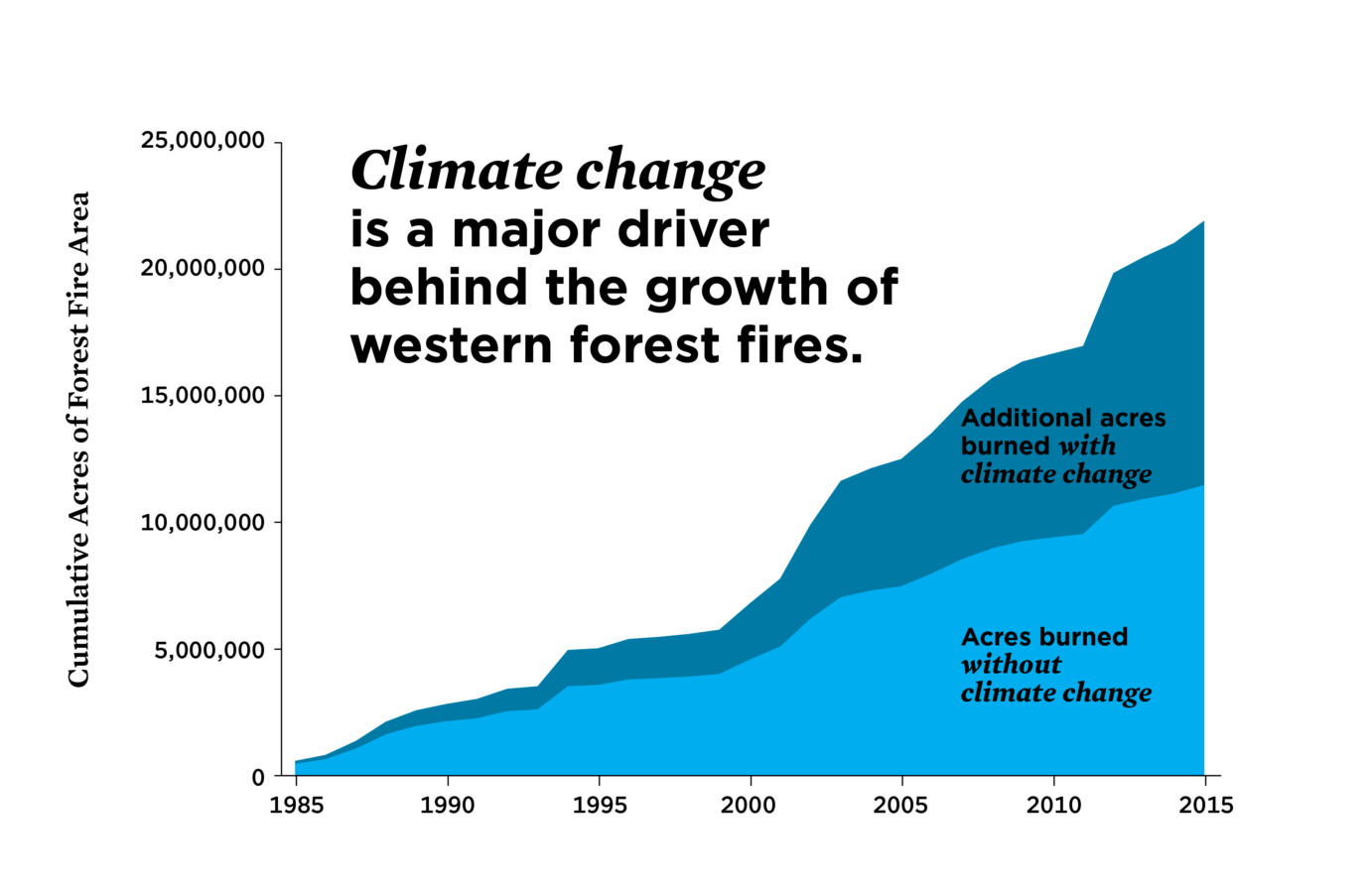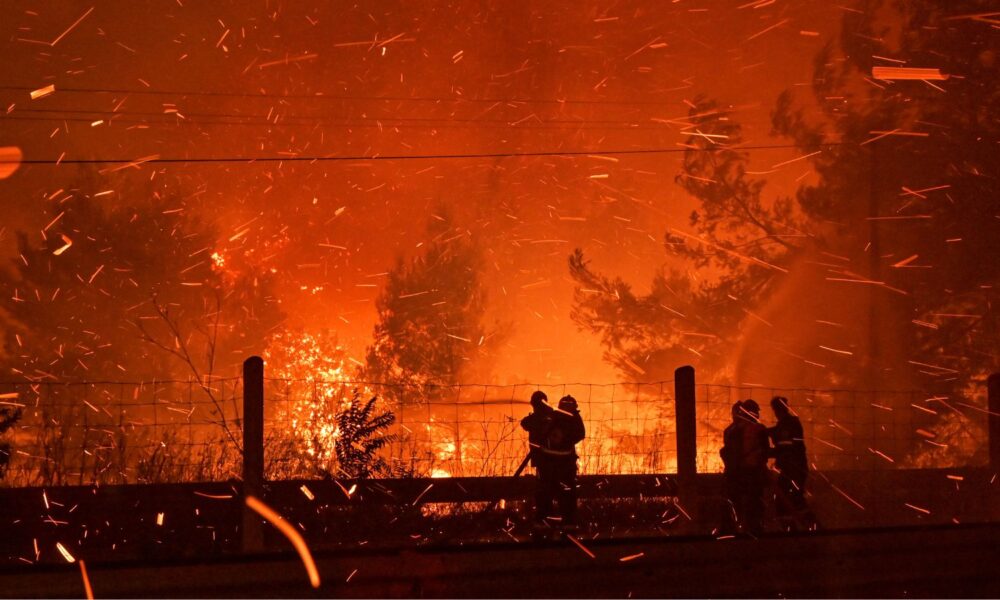Across the scientific community, the threats and cuts coming from the Trump administration are already wreaking widespread havoc. With the peak of wildfire season approaching, the impacts of these cuts are top of mind, particularly the broad reduction in force and early retirements in the National Weather Service (NWS), which is now struggling to fill ‘critical’ vacancies, with some NWS offices no longer operating 24/7/365.
I’ll break down what these cuts could mean for the upcoming and future fire seasons, how climate change has supercharged wildfire activity and conditions, and what we’re expecting in the 2025 wildfire season.
Impacts of budget and personnel cuts
While the administration exempted wildland firefighters from personnel cuts, their actions to date have substantially reduced the number of federal workers who actively support firefighting efforts. These are personnel who ensure that front-line wildland firefighters have food, housing, and access to necessities like clean water during what can be long deployments to remote areas. These employees fall under UDSA and DOI, but one specific position, Incident Meteorologists could be affected by cuts at NOAA.
Incident meteorologists (IMET) are specialized, highly trained professionals who deploy to large fires to provide forecasts to ensure that firefighters can prioritize values at risk (lingo for anything threatened by a fire) and stay safe themselves. During a wildfire, conditions can change rapidly. A sudden wind shift could redirect a fire toward an entirely different town; a nearby thunderstorm could ignite a new blaze; and some fires even generate their own weather. In each of these situations, IMETs provide critical information that keep communities and front-line personnel safe. What’s most worrisome about this situation is the lack of transparency: we don’t know if IMETs were impacted by layoffs, voluntary reductions in force, or budget cuts—or if there is a strategy to ensure sufficient staffing ahead of peak fire season.
To make matters worse, defenders of the President’s cuts point to a plan to create a National Wildland Fire Fighting agency, but such an agency is proposed and therefore does not exist, making it of little use for anyone facing a wildfire in the coming months.
On a longer-term basis, proposed cuts to satellite programs and scientific infrastructure could constrain our ability to maintain all sorts of critical functions like detecting fires remotely (VIIRS), accurately modeling fire spread, which is a key component of decision making when actioning a fire (MODIS), and monitoring smoke conditions and sending timely air quality alerts (GOES).
Further, cuts are hamstringing innovative scientific programs that could enhance our ability to respond to wildfires, manage our forests for resilience, and adapt to the coming impacts of climate change.
Wildfires and climate change
The scope of these cuts, both proposed and actualized, is particularly difficult to stomach given the well-established science showing the myriad ways that climate change is super charging wildfires.

This is particularly true for western North America, given the large number of studies focused on the region. Between 1984 and 2015, climate change had nearly doubled burned area in forests in the western US. Other recent research shows that, relative to the mid 1980s, more wildfires are burning larger areas (fourfold by one analysis), at higher severity, growing with greater speed, at higher elevations, over longer fire seasons, and under more extreme fire weather conditions. Wildfires also are burning later into the night and ramping up earlier in the morning, due in part to increases in vapor pressure deficit, which has been attributed to climate change.
At the same time, research illustrating the consequences of wildfire exposure continues to accumulate. Recent research links short-term exposure to the smallest particles in wildfire smoke, PM2.5, to greater risk of mortality and pre-term birth for pregnant individuals.
(If you’re wondering why wildfire researchers are obsessed with a start date of 1984, don’t fear! It’s not Orwellian, just an artifact of the start date of MTBS (Monitoring Trends in Burned Severity), a widely-used, publicly available fire perimeter and severity database for the entire US.)
The outlook
All of this is against the backdrop of seasonal outlooks from both the US and Canadian governments, which show escalating wildfire risk across western North America beginning in June and continuing through the summer. Already, we’ve seen devastating fires in Manitoba and in the United States, we have already ahead of the 10 year average and number of fires to date.
On the US front, the most recent update, released on May 1 shows above average wildfire potential in coastal Southeastern states, southwestern states, and northern Minnesota, where a dry April has constrained spring greening and elevated wildfire risk. In June, July, and August, the outlook forecasts above average wildfire potential for California, Pacific Northwest states, and large parts of Texas and Oklahoma.
Natural Resources Canada’s seasonal outlook adds color to an already bleak picture of North America’s wildfire situation, with the area categorized as high fire risk forecasted to grow as the summer unfolds.
Changes made by the Trump administration may damage our ability to detect, respond, and recover from wildfires, on top of cuts to research that limit our ability to adapt to future fires and improve our responses, on top of cuts to FEMA that will constrain our ability to help those affected.
Although other factors like colonization, forest management, and misguided suppression policies have all played a role in getting us to this point, ignoring the impact of climate change and potential impacts of the Trump administration’s cuts sets us back even further.
Conversations with Bob Gray contributed to this blog.

